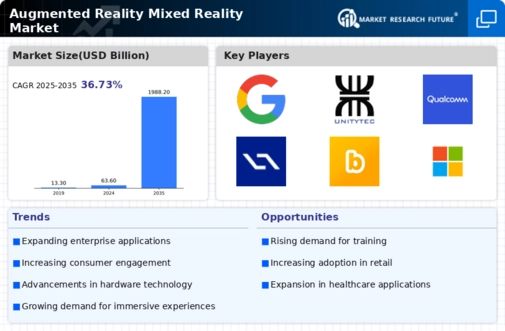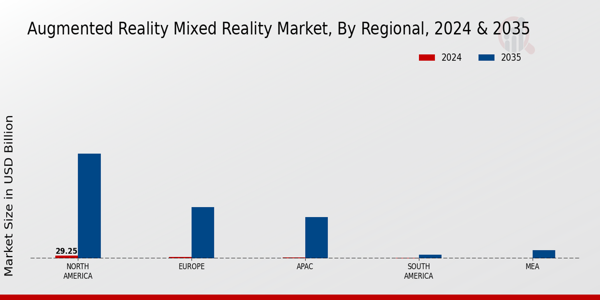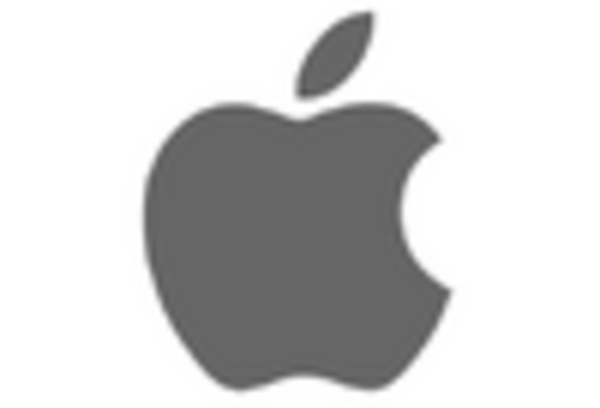Advancements in Hardware Technology
Technological advancements in hardware are playing a pivotal role in the Augmented Reality Mixed Reality Market. The development of lightweight, high-performance devices such as smart glasses and headsets is facilitating the adoption of AR and MR solutions. For example, the introduction of devices with improved processing power and battery life is enabling more complex applications to run seamlessly. According to recent statistics, the market for AR headsets is projected to grow at a compound annual growth rate of 40 percent over the next five years. This growth indicates a robust interest in hardware that supports immersive experiences, thereby driving the overall market forward.
Integration with Artificial Intelligence
The integration of artificial intelligence with AR and MR technologies is emerging as a key driver in the Augmented Reality Mixed Reality Market. AI enhances the capabilities of AR and MR applications by enabling more personalized and adaptive experiences. For example, AI algorithms can analyze user behavior and preferences to tailor content in real-time, making interactions more engaging. This synergy is expected to create new opportunities for businesses, as evidenced by projections that the market for AI-enhanced AR applications will grow by 25 percent over the next few years. Such developments indicate a promising future for the industry as it evolves to meet user expectations.
Rising Demand in Training and Simulation
The Augmented Reality Mixed Reality Market is experiencing a notable rise in demand for training and simulation applications. Industries such as aviation, military, and healthcare are leveraging AR and MR technologies to create realistic training environments that enhance learning outcomes. For instance, AR simulations allow trainees to practice complex procedures in a safe, controlled setting. Data indicates that the market for AR in training is expected to grow by 30 percent annually, reflecting the increasing recognition of its effectiveness in skill development. This trend is likely to drive further investment and innovation in training solutions utilizing AR and MR.
Increased Investment in AR and MR Startups
Investment in startups focused on AR and MR technologies is significantly influencing the Augmented Reality Mixed Reality Market. Venture capitalists and tech giants are increasingly funding innovative companies that are developing cutting-edge applications. This influx of capital is fostering a competitive landscape where new ideas can flourish. Recent reports suggest that funding for AR and MR startups reached over 3 billion dollars in the past year alone. Such financial backing not only accelerates technological advancements but also expands the range of applications available in the market, thereby attracting more users and businesses to adopt these technologies.
Growing Demand for Enhanced User Experiences
The Augmented Reality Mixed Reality Market is witnessing a surge in demand for enhanced user experiences across various sectors. Businesses are increasingly recognizing the potential of AR and MR technologies to create immersive environments that engage users more effectively. For instance, in retail, companies are utilizing AR to allow customers to visualize products in their own space before making a purchase. This trend is supported by data indicating that 61 percent of consumers prefer retailers that offer AR experiences. As a result, the industry is likely to see a significant increase in investment aimed at developing innovative applications that cater to this demand.


















Leave a Comment